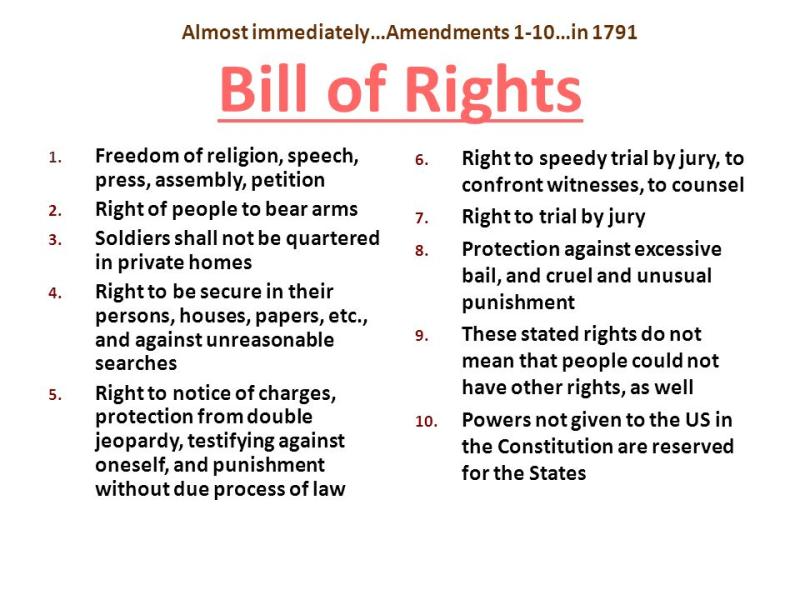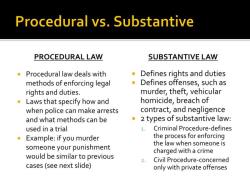What is the purpose of most of the amendments?
Constitutional amendments serve various purposes, and their intent can vary depending on the specific amendment and the historical context in which it was enacted. In general, amendments to a constitution are made to adapt the document to changing circumstances, address perceived shortcomings, and reflect the evolving values and needs of society. Here are some common purposes behind constitutional amendments:
Protection of Rights: Many amendments are aimed at expanding or clarifying the rights of individuals. For example, the Bill of Rights (the first ten amendments to the U.S. Constitution) was added to safeguard fundamental rights such as freedom of speech, religion, and the right to a fair trial.
Expansion of Suffrage: Amendments are often enacted to extend voting rights to previously disenfranchised groups. The 15th Amendment in the U.S., for instance, prohibited the denial of voting rights based on race, and subsequent amendments addressed issues of gender and age.
Government Structure and Powers: Amendments may be introduced to modify the structure and powers of government entities. The U.S. Constitution's 17th Amendment, for example, changed the method of electing senators from state legislatures to direct popular vote.
Prohibition or Repeal of Prohibitions: Amendments can be used to institute or repeal specific policies. The 18th Amendment in the U.S. established Prohibition, prohibiting the manufacture and sale of alcoholic beverages, while the 21st Amendment later repealed it.
Adaptation to Social Changes: Societal changes and evolving norms may prompt amendments to reflect contemporary values. For instance, amendments related to equal protection and anti-discrimination laws have been introduced to address changing attitudes towards civil rights.
Balancing Powers: Some amendments are designed to balance powers between different branches of government or levels of government. These amendments aim to prevent the concentration of power and ensure a system of checks and balances.
It's important to note that the specific purposes behind constitutional amendments can vary widely across different countries and their respective legal and political contexts. Additionally, the process of amending a constitution is often deliberate and requires a significant level of consensus among lawmakers and citizens.
Identifying the overarching purposes served by most constitutional amendments
Identifying the overarching purposes served by most constitutional amendments is a fascinating exercise, as it helps us understand the evolving values and priorities of a nation. While every amendment has its own specific context and focus, several broad purposes come into play across many of them:
1. Expanding Individual Rights and Liberties: This is a dominant theme in many amendments, particularly the Bill of Rights (1st-10th). These amendments protect fundamental freedoms like speech, religion, assembly, and due process, reflecting a commitment to individual liberty and limiting the power of government. Examples include the 14th Amendment's Equal Protection Clause and the 26th Amendment lowering the voting age.
2. Addressing Inequality and Discrimination: Historical injustices and persistent inequalities have led to several amendments aimed at ensuring equal rights and opportunities for all citizens. The 13th and 15th Amendments abolished slavery and guaranteed voting rights for Black men, while the 19th Amendment granted suffrage to women. More recent amendments address gender and disability discrimination.
3. Strengthening or Rebalancing Power Structures: The balance of power between the federal government, states, and individuals has been a constant theme in American history. Some amendments strengthen federal power over issues like taxation and commerce (16th Amendment), while others protect states' rights (10th Amendment). Amendments can also redefine the relationship between branches of government, like the 22nd Amendment limiting presidential terms.
4. Responding to Technological and Social Change: The Constitution needs to adapt to evolving technologies and societal structures. The 26th Amendment lowering the voting age reflects changing demographics and political participation, while the 20th Amendment adjusted presidential transition timing for radio and telegraph communication. Future amendments may address digital privacy or artificial intelligence.
5. Reflecting Evolving Public Values and Priorities: Public opinion and understanding of fundamental rights and liberties evolve over time. Amendments like the 21st Amendment repealing Prohibition demonstrate society's changing views on alcohol consumption. Future amendments might address issues like healthcare or campaign finance reform, reflecting contemporary concerns.
It's important to remember that these overarching purposes are not mutually exclusive. Many amendments serve multiple goals, and their interpretations can evolve over time. Analyzing amendments through these lenses provides insight into the ongoing dialogue between fundamental principles, changing circumstances, and the public's will, making them crucial documents in the nation's ongoing story.
I hope this helps! Let me know if you have any further questions or specific amendments you'd like to discuss.












